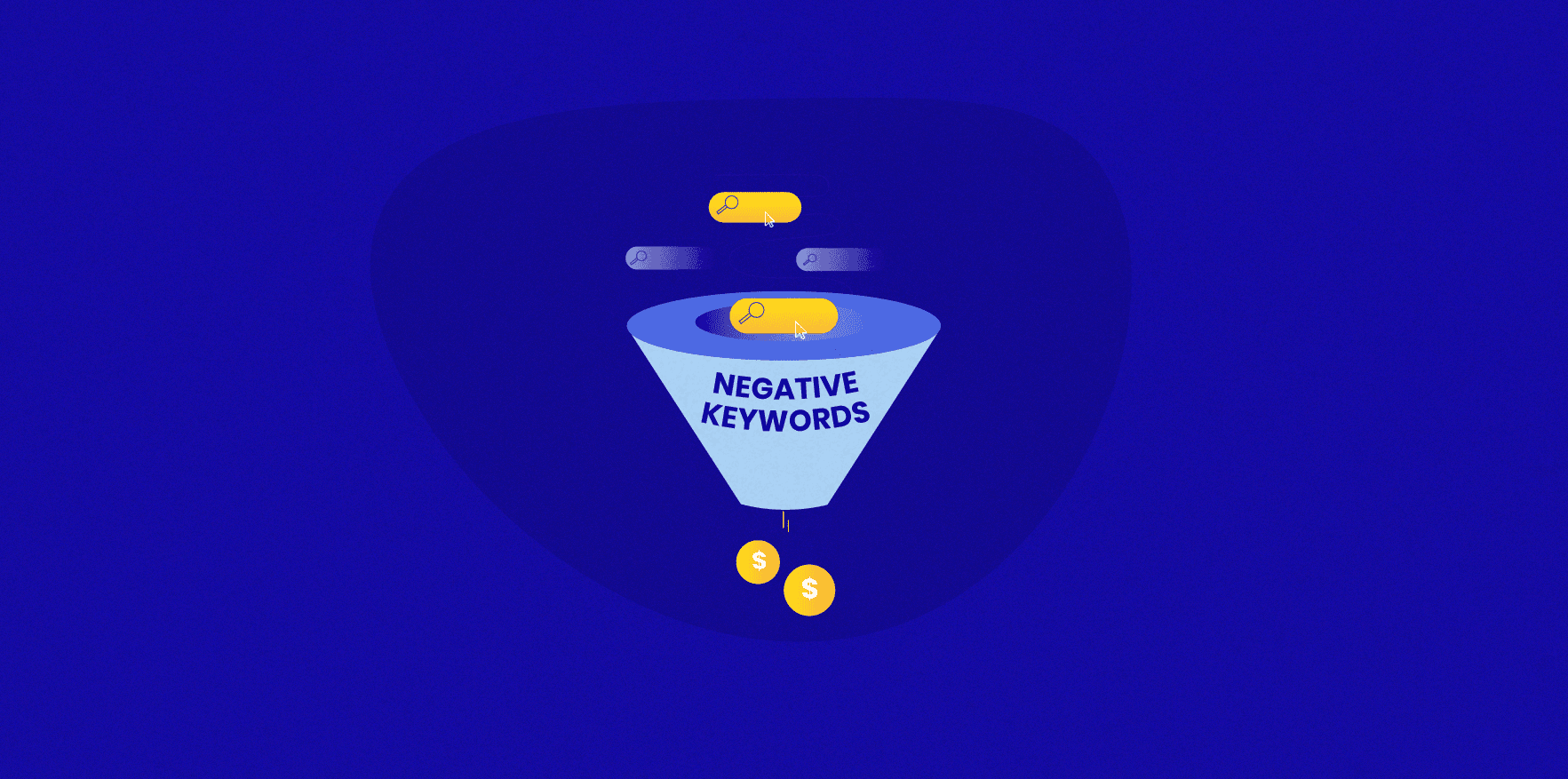
Performance
Negative Keywords: 5 Tips to Boost Your Performance
PPC
Tips

Alex Coupe
May 4, 2023
Are your ad campaigns getting clicks, but not the right ones? Do you feel like your ad spend is disappearing into a black hole of irrelevant traffic? Fear not - there's a simple solution to these common ad troubles: negative keyword optimization.
Without an effective negative keyword list, many Google and Microsoft ad campaigns end up being more expensive than necessary because advertisers pay for clicks that never lead to revenue or results.
This is where Negative Keywords come in.
Negative Keywords help you dodge irrelevant clicks and save you from burning through your budget on fruitless ad campaigns.
In this article, we'll explain how you can optimize your negative keyword use and use our experiences to show you what can happen if you don't!
What are Negative Keywords?
So we've already established the general premise of negative keywords, and how they can help improve your campaign results. But what are they and how do they work?
Simply put, Negative Keywords are the keywords that you don't want to associate your ads with.
They are applied to campaigns or ad groups in a similar way to how you add keywords, but they work oppositely. Negative Keyword lists tell search engines like Google and Bing which search terms you DON'T want your ads to show up for.
Think of Negative Words as a bouncer at the door of your online business, keeping out window shoppers and only letting in the VIPs.
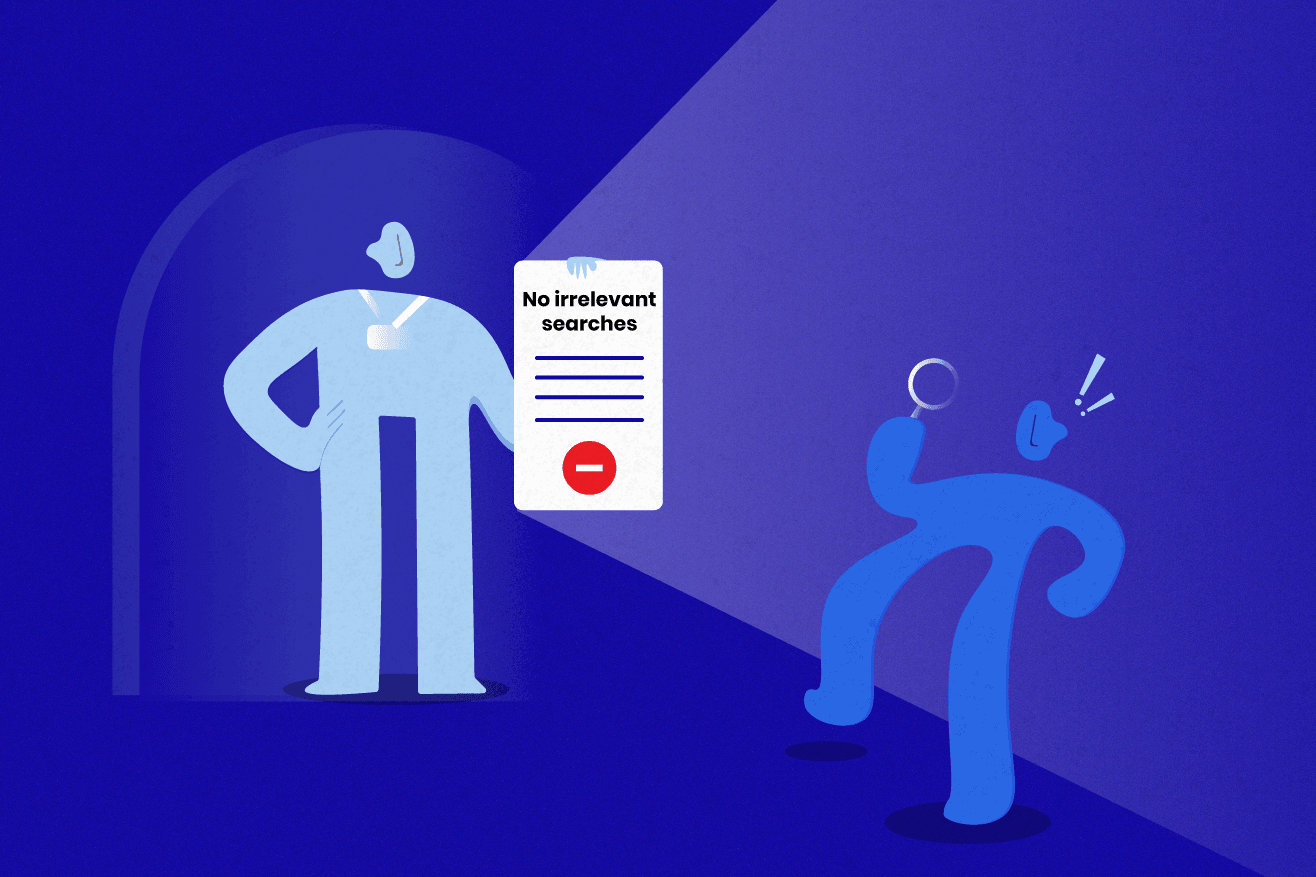
They prevent your ad from appearing in searches unrelated to the services or products you provide and ensure that your ads only appear in relevant searches by the people you want to target.
Why are they important?
Now we know what negative keywords are, let's identify why they're crucial to the success of your campaigns. The importance of Negative Keywords can be attributed to their ability to help you avoid two potential problems.
1. Reach your target audience
Negative keyword lists stop you from appearing in searches from users that are unlikely to become customers.
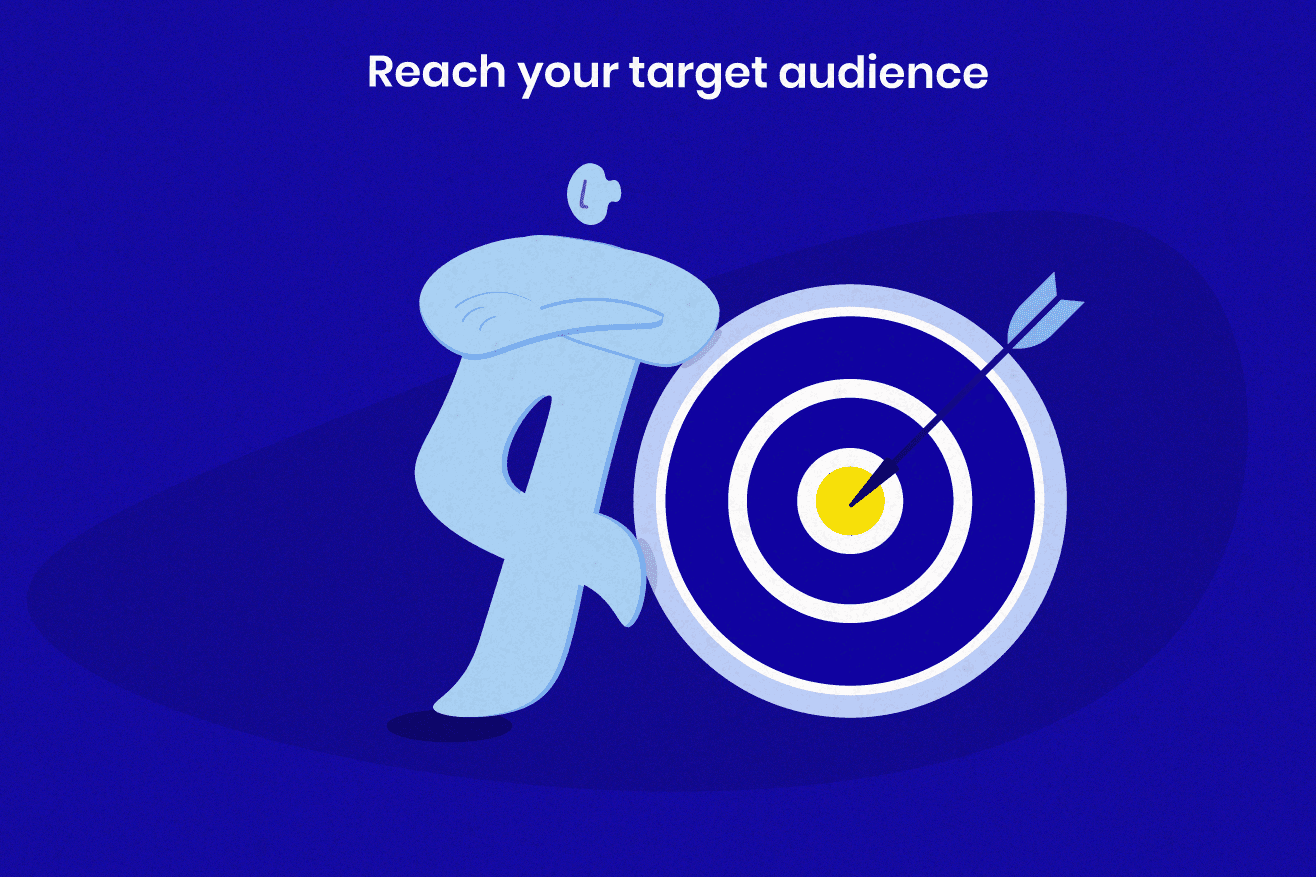
Effective negative keyword optimization means reaching only the best potential audience with your ads and, importantly, reducing the amount of money you spend on clicks that don't convert. With a well-optimized negative keyword list, you'll see an increase in click-through and conversion rates, and ultimately, a higher ROI.
It's important to take the time to understand your products, your target audience, and which keywords you need to eliminate from your ad campaigns.
2. Avoid Keyword Cannibalization
Failure to properly optimize the negative keywords on your campaign may also see you competing against your ads for the same keywords.
We call this keyword cannibalization, and it can be hugely detrimental to your campaigns.
Keyword Cannibalization happens when two or more ads from the same campaign compete for the same search terms or audience, resulting in the ads driving up each other's costs, lowering overall performance, and slashing ROI.
By adding negative keywords to each ad group or campaign, you can ensure that each ad is only triggered by the most relevant keywords, preventing multiple ads from competing against each other for the same keyword.

For example, imagine your company is running ads for a free and paid version of the software. You might want to bid on the term "software", but if you do, then the ad for your paid version may appear in searches for "freeware" or "free software" - reaching the wrong audience and directly competing with your other ad for the free version.
However, if you listed those two search terms as negative keywords you could avoid keyword cannibalization and increase the relevancy of both your ads, leading to higher CTR from a reduced ad spend.
Quick Case Study: How We Got It Wrong…
We’re all human, and we all make mistakes. Even as digital marketing experts, we've made some negative keyword blunders in the past. But, as they say, experience is the best teacher, and these missteps have taught us invaluable lessons that we're keen to share here.
When managing a PPC campaign for a legal client, our use of negative keywords left a lot to be desired. We ended up bidding on generic, uncontextualized keywords, resulting in our client's ad showing up in irrelevant searches by the wrong audience, wasting ad spend and slashing ROI. Our performance team was well aware of the value of negative keywords, but a breakdown in communication meant that no one took ownership of compiling the list.
As our client offered a very niche service, and without an tailored negative keyword list to narrow down our audience, our ad ended up appearing in a huge number of searches for broad, unspecified terms like ‘lawsuit’ or ‘lawyer’ (we’ll talk more about different search types later on). The lack of an effective negative keyword list meant we were unable to control and filter the searches that our ad was showing up for. This meant that our client’s PPC spend increased whilst the conversion rate of the campaign decreased.
As cliché as it sounds, anyone can make mistakes, but it's what we do to fix them that matters. We didn't just stop at refunding our client after realizing our error; we immediately put a structured process in place to ensure that every campaign we run includes an effective negative keyword list.
This article serves as both a reflection of what we've learned from our past mistakes and a reminder of the consequences of ignoring negative keywords.
5 tips to utilize the negative keyword function
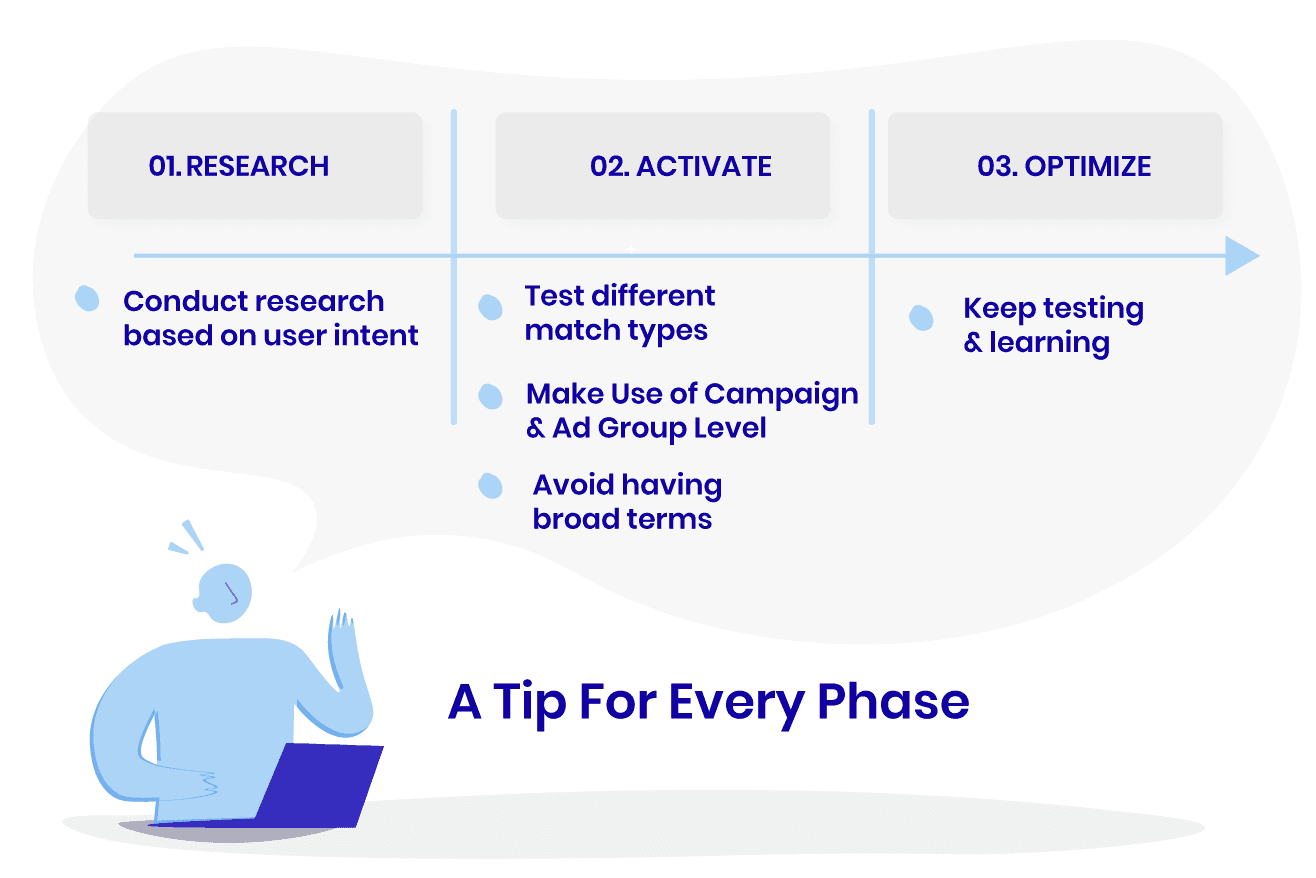
So, Negative Keywords are important. But how do you make sure that you're utilizing and managing the Negative Keywords function effectively in every stage of a PPC campaign? There are a few things to keep in mind before during and after you create your negative keywords list:
1. Conduct research based on user intent
This is perhaps the most important stage in your Negative Keyword Optimization journey.
Before you start adding negative keywords to your campaign, you must conduct thorough keyword research to identify the terms that are most (and least) relevant to your business and the customer groups you wish to target.
Consider our client, a payment gateway provider, as an example. They wanted to target search users who were ready and waiting to implement a payment gateway into their online business.
To optimize the campaign's negative keyword list, the performance team decided to add "what is a payment gateway" and "payment gateway help center" terms to it. These terms indicated that users were in the research stages of their payment gateway investment or were already existing payment gateway customers, which made the conversion rate from showing up for these audiences likely to be very low.
2. Test different match types
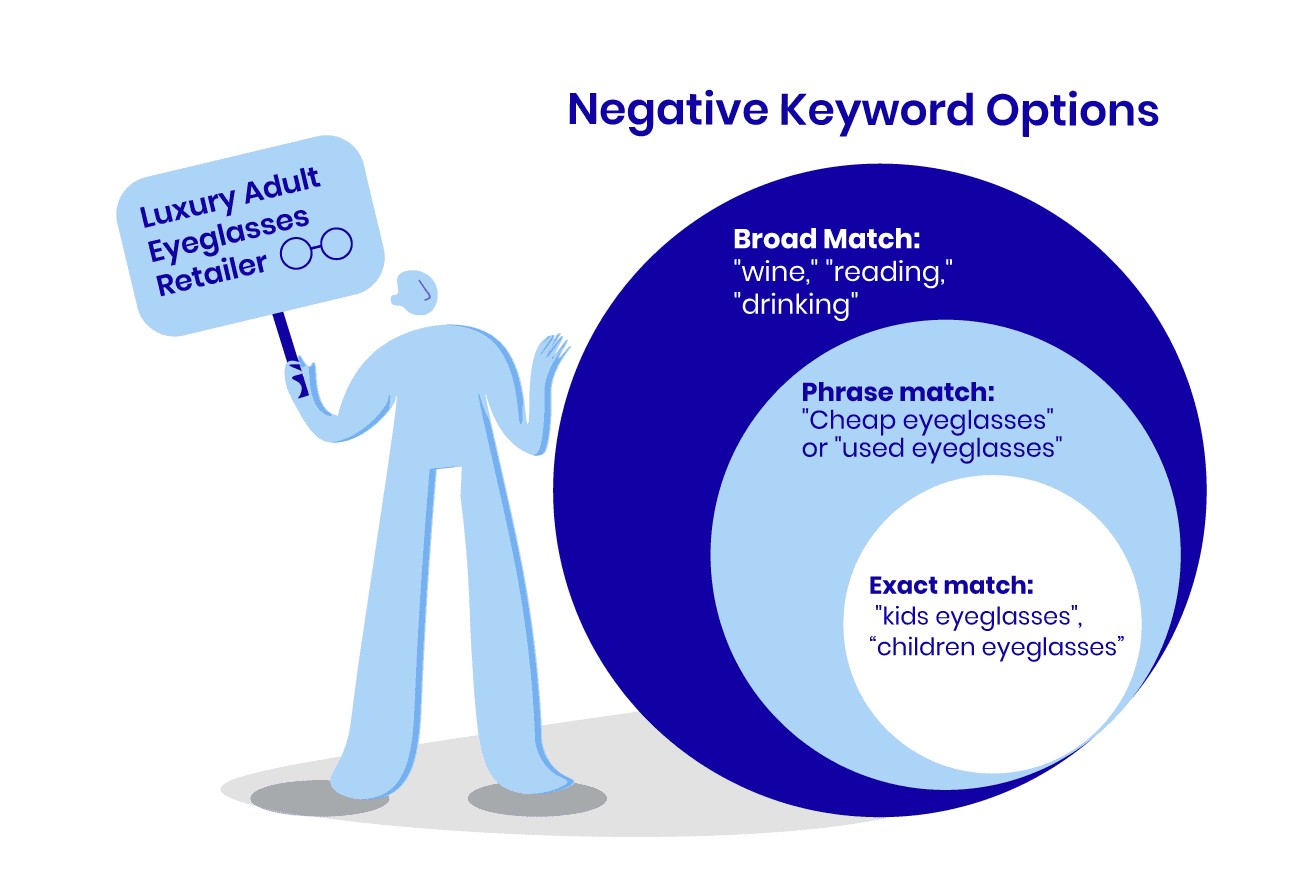
Just like regular keywords, there are different types of matches you can use to make sure you're excluding the right search terms - but, it's important to note that they work in a slightly different way to regular keyword types. By using a combination of negative keyword types, you can fine-tune your PPC campaign without being too restrictive.
Here's an idea of how they could use different negative keywords to optimize their PPC campaign:
a. Broad Match
These matches stop ads from appearing in any searches which include any of those terms.
For example, an eyeglasses retailer might use broad-match negative keywords like "wine," "reading," or "drinking" to prevent the ad from showing up when someone searches for irrelevant "glasses". Broad match terms should be used carefully to not limit your ad's reach.
b. Phrase match
To exclude searches that contain words in a specific order, phrase match negative keywords can be used.
Adding "Cheap eyeglasses" or "used eyeglasses" as phrases match negative keywords that would prevent the ad from showing in searches for those phrases in that exact order. This would allow the ad to continue appearing in other relevant searches, such as "buy eyeglasses", but might also cause the ad to appear in searches containing irrelevant keywords in another order, such as "used luxury eyeglasses".
c. Exact Match
If you want to be super specific and exclude only exact searches, then you can use exact match negative keywords.
The retailer could add the exact match negative keyword "kids eyeglasses" to prevent the ad from being seen by those people searching for that exact term. However, they would also need to be aware that the ad may still appear in searches for "children's eyeglasses" or "eyeglasses for kids".
3. Make Use of Campaign & Ad Group Level
As well as being aware of the negative keyword different match types, you should also consider the level at which you want to eliminate negative keywords.
4. Campaign level
Adding negative keywords at the campaign level is useful when you want to stop your ads from appearing for specific keywords that are not relevant to any ad group within the campaign.
For instance, the eyeglasses retailer would want to exclude searches for "wine glasses" across all ad groups and could therefore add this as a negative keyword at the campaign level.
5. Ad Group Level
At the ad group level, you can prevent your ad from showing up for specific keywords that are not relevant to a particular ad group.
If the retailer was running an ad group targeting "men's eyeglasses", they could add "women's" as a negative keyword to exclude irrelevant searches for "women's eyeglasses".
6. Avoid having broad terms
Using broad terms in negative keywords might seem time-efficient but it can limit your ad reach and may prevent potential customers from finding you. That's why our performance teams rarely use broad match terms in negative keywords.
As our performance manager, Joël, says: "We want control over who sees our ads and who doesn't. To do that, we take the time to choose exactly who sees our ads and who doesn't use phrases and exact matches."
It's important to be objective and rational in your keyword research. It's easy to get drawn in by trending keywords and end up bidding on or excluding certain popular terms.
7. Keep testing and learning
Don't set and forget your negative keyword list. It's important to regularly test and adjust it to make sure it's always up-to-date and working for your campaign. Regularly reviewing your Search Terms Report in Google Analytics should be central to your regular and negative keyword research process.
As we've mentioned, we learned this lesson the hard way with one of our legal clients. Now, we have a process in place that includes weekly reviews for stable campaigns and daily reviews for more volatile ones with a high cost per click. We also keep our eye on the Search Terms Report for new keywords to exclude.
Remember to keep your business in mind and adapt your negative keyword list as your industry changes. Don't be afraid to adapt and change your negative keywords as you go along to get the best results.
Read more about why adaptability is so crucial in modern digital marketing here.
Wrap-up
Failing to optimize your negative keywords is a surefire way to waste money. No matter how clever your ad copy or how meticulous your targeting is, if you're not excluding the wrong audience, your clicks will be wasted and your ROI will suffer.
We've learned this lesson the hard way, but we're not alone. Many businesses have fallen into the same trap, and it's often because they need to pay more attention to the importance of negative keyword optimization. But we don't want you to make the same mistake we did.
We believe that by sharing our knowledge, our success, and our mistakes, we can all grow. We're working on a future article where we'll delve deeper into the common pitfalls of campaign management and the lessons we've learned from them!
To keep up to date with this and our other SEM content, and to hear the latest industry news and insights directly from us, you can join our internal Slack channel.
Join the talk!
Stay on top of digital marketing innovation thanks to the insights from our internal Slack.
We post everyday!


